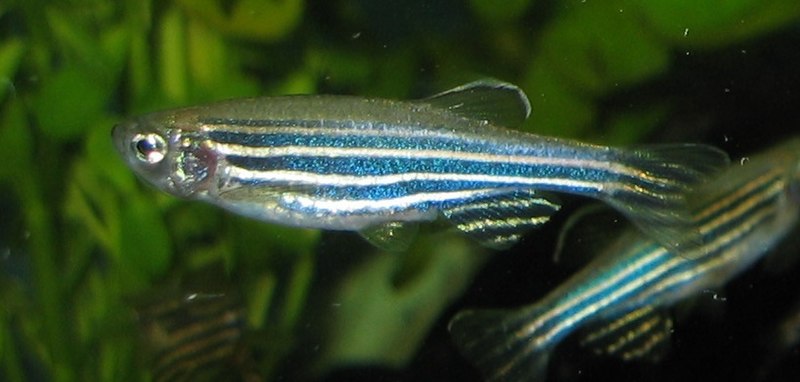Neuromodulation Insights from Virtual Reality Studies on Zebrafish

In a groundbreaking study led by researchers at the Janelia Research Campus, part of the Howard Hughes Medical Institute, insights into the complex workings of neuromodulation have been revealed through the examination of larval zebrafish in a virtual reality (VR) environment. The research, published in the journal *Neuron* on June 11, 2025, explores how serotonergic neurons in the dorsal raphe nucleus of zebrafish integrate sensory information to modulate swimming behavior, shedding light on the broader implications for understanding brain function and mood disorders such as depression.
The study builds upon previous findings from the Ahrens Lab at Janelia, which demonstrated that serotonergic neurons utilize visual cues to assess swimming effectiveness and optimize motor responses. This new research delves deeper into the neuronal mechanisms behind this process, particularly focusing on a 'gating' mechanism that controls how visual information influences serotonin release.
According to Dr. Takashi Kawashima, lead author of the study and a neuroscientist at Janelia, "Understanding how these neurons process information and regulate serotonin release is crucial for comprehending behavioral flexibility in response to changing environments." The researchers found that the gating mechanism is activated only after the zebrafish swims, allowing the neurons to integrate visual information about their movement effectively. This is akin to a system learning from experience, as the neurons adjust their responses based on past actions, a concept that is gaining traction in both neuroscience and machine learning fields.
The implications of this study extend beyond basic neuroscience. Dr. Sarah Johnson, Professor of Psychology at Stanford University and an expert in behavioral neuroscience, notes that these findings could enhance our understanding of mood disorders. "By elucidating the neuromodulatory processes at play, we may uncover new therapeutic targets for conditions like depression, where serotonin regulation is critical," she remarked.
The VR setup employed in the study allowed researchers to monitor neuronal activity while the zebrafish engaged in swimming and coasting patterns. When the fish swam, the activity of serotonergic neurons was suppressed. However, upon transitioning to a coasting phase, a rebound of neuronal activity occurred, facilitating the integration of visual information that subsequently influenced serotonin release. This dynamic interaction highlights how neuromodulation is not merely a straightforward process but rather a complex interplay of timing and sensory input.
Furthermore, the research team utilized advanced imaging techniques to visualize neuronal activity, marking a significant advancement in understanding how neuromodulators operate within neuronal circuits. As Ahrens explained, "This study emphasizes the importance of timing in neuronal signaling, a factor that has often been overlooked in neuromodulation research."
In a broader context, the findings contribute to ongoing discussions within the scientific community about the role of neuromodulators in learning and memory, as well as their potential implications for artificial intelligence systems that mimic biological learning processes. Dr. Emily Chen, a computational neuroscientist at Massachusetts Institute of Technology, commented, "The parallels between biological systems and machine learning algorithms are becoming increasingly apparent, and studies like this one will undoubtedly fuel further exploration in both fields."
As this research continues to unfold, the potential applications may pave the way for new approaches in treating mood disorders and enhancing our understanding of brain function. The Janelia team's work represents a significant step forward in neuroscience, providing a clearer picture of how neuromodulation operates and its implications for behavior and mental health.
In conclusion, the exploration of zebrafish in a virtual reality environment not only offers a window into fundamental neural mechanisms but also holds promise for future research aimed at addressing complex psychiatric conditions. As scientists continue to decode the intricacies of neuromodulation, the intersection of neuroscience and technology will likely yield innovative solutions for understanding and treating brain disorders in humans.
Advertisement
Tags
Advertisement





